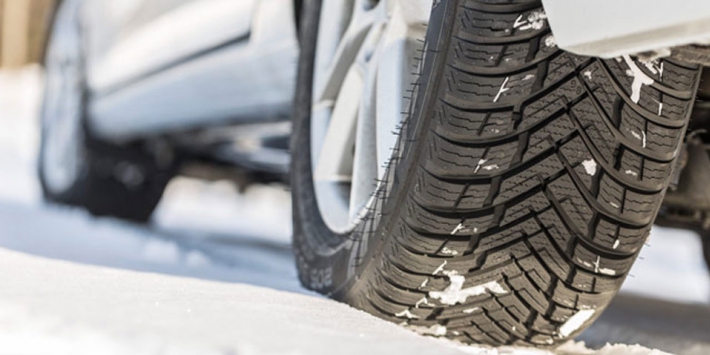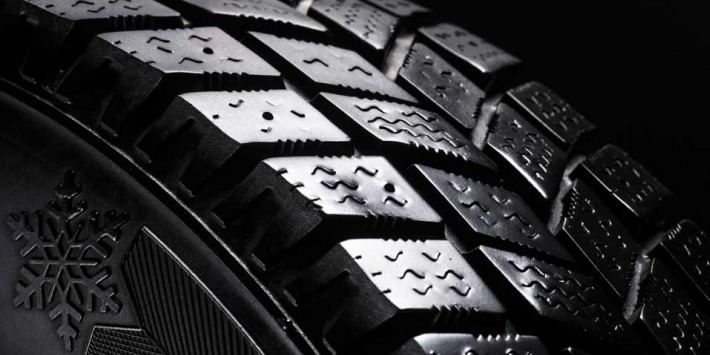If you don't want to change your tyres twice a year, you might be tempted to opt for all-season tyres that can be used all year round. But is this the right choice in terms of safety? How do all-season tyres perform in the winter? Discover the differences in performance between winter tyres and all-season tyres.

What is an all-season tyre?
All-season tyres are multi-purpose tyres which allow you to use the same tyres all year round. However, they are still a compromise between a summer tyre and a winter tyre: all-season tyres do not offer the same level of performance as summer tyres on the dry and cannot compete with winter tyres in cold weather on snow, ice or wet surfaces.
They are a practical solution, but not necessarily the best option in terms of safety or even from a financial perspective, as we will see below.
Markings which can be confusing
Like winter tyres, all-season tyres come with the M+S marking (Mud & Snow). But make no mistake, this only means that the tyre structure is suitable for driving on mud or snow-covered surfaces. The label is a declaration from the manufacturer and provides no guarantee regarding the tyre’s performance in winter weather conditions.
Only some all-season tyre models, such as the Nokian Weatherproof or the Vector 4Seasons Gen-2 from Goodyear, have the 3PMSF (Three Peak Mountain Snowflake) label which certifies the tyre’s performance on snow-covered surfaces as proven under standardised testing.
All-season tyres or winter tyres: performance comparison
A more reliable source of information than sidewall markings are the results of tests conducted by the Touring Club Suisse (TCS) which can be used to compare the performance of summer, winter and all-season tyres at a winter temperature of 10°C and a summer temperature of 20°C. These tests show that all-season tyres are less efficient than summer tyres on dry surfaces and perform less well than winter tyres on wet or snow-covered surfaces.
| Measured performance | Test conditions | Summer tyre | Winter tyre | All-season tyre |
| Braking distances on dry surfaces | 100 à 0 kmph ± 10°C |
38 m | 51 m | 49 m |
| 100 à 0 kmph ± 20°C |
38 m | 57 m | 52 m | |
| Braking distances on wet surfaces | 80 à 0 kmph ± 10°C |
43 m | 40 m | 44 m |
| 80 à 0 kmph ± 20°C |
40 m | 45 m | 47 m | |
| Braking distances on snow | 40 à 0 kmph | 61 m | 29 m | 42 m |
| Fuel consumption |
– | 7,5 l/100 km | 7,6 l/100 km | 7,9 l/100 km |
| Wear | ± 10°C | 105 % | 100 % | 115 % |
| ± 20°C | 100 % | 115 % | 110 % |
All-season tyres or seasonal tyre changes: what works out the cheapest?
As you can see from the bottom part of the table, the TCS tests also show that all-season tyres wear more quickly and consume more fuel than summer and winter tyres.
Not so kind on your wallet then? Indeed, the TCS calculated the relative return on investment which shows that alternating summer and winter tyres actually costs less than running all-season tyres all year round.
rezulteo recommends:
Rotating summer and winter tyres is not only safer, but also more economical than using all-season tyres all year round.
All-season tyres can be an acceptable alternative in areas where temperatures rarely drop below 7°C or where it rarely snows.




